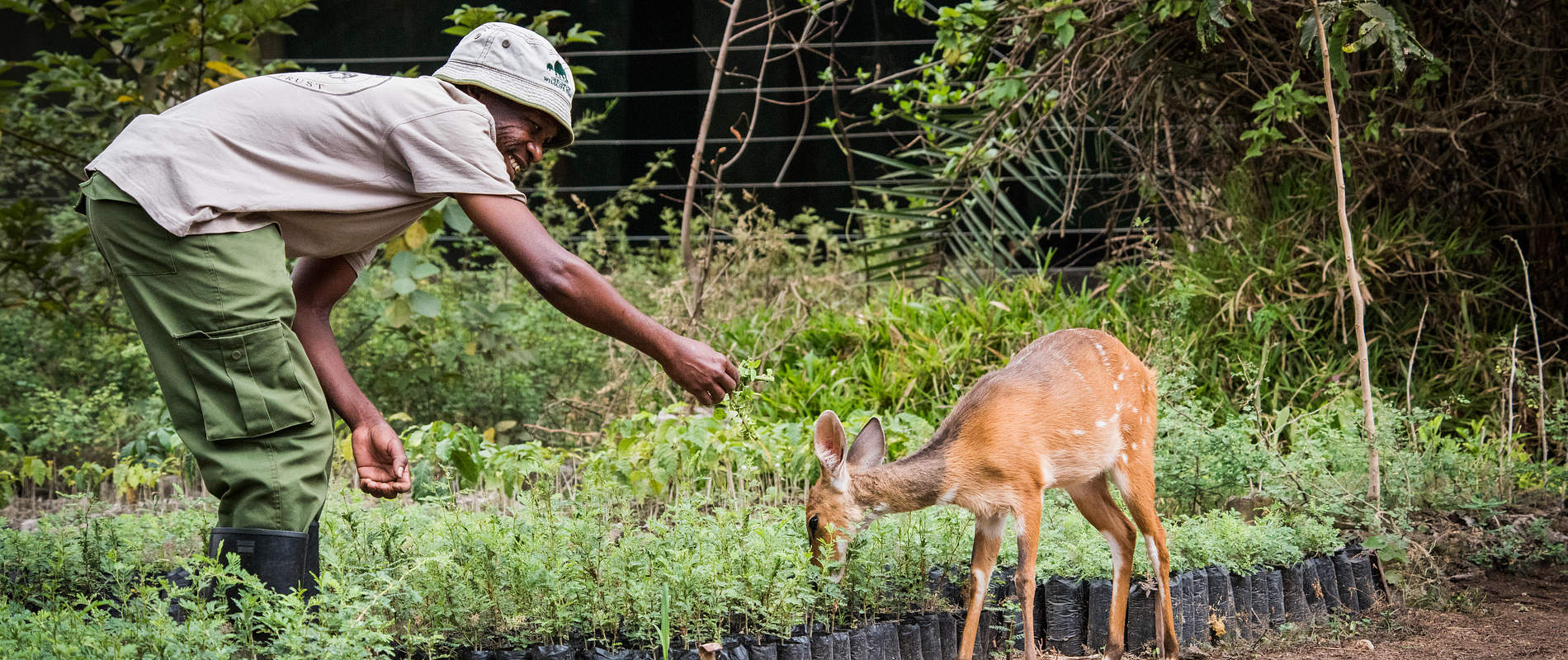Reforestation is one of the best climate change solutions available today. Trees are the lungs of our planet, capturing carbon and releasing oxygen back into the atmosphere, feeding all forms of life.

And yet, human activities continue to destroy forests on a massive scale. The United Nations estimates that, since 1990, 420 million hectares of forest have been lost through conversion to other land uses. Deforestation and degradation has a devastating effect on habitats, wildlife, communities, and the climate.
Here in Kenya, we are taking action to protect our forests and nurture new ones. Over the years, we have planted millions of trees in key ecosystems, supporting habitats and the people who live alongside them. In this interview with our Kibwezi Forest Project Manager, James Mbuthia, discover how our reforestation efforts continue to take root.

James Mbuthia, Kibwezi Forest Project Manager
To begin, can you share a bit of background on your tree planting efforts?
James Mbuthia: Every year since 2011, we have done forest enrichment plantings in the Kibwezi Forest Reserve. These tree planting exercises in the Kibwezi forest and the neighbouring communities are a noble duty for everyone, as the world tries to reverse the threats of climate change. Sheldrick Wildlife Trust is committed to playing its part in this global campaign.
How many trees will be planted this wet season?
James: We wish to plant a total of 55,680 saplings in this year’s exercise, which is our tree nursery’s current capacity. This is something we do on an annual basis here in Kibwezi.

How long does it take before the saplings are ready to be planted?
James: The saplings have been nurtured in our Kibwezi tree nursery for nearly a year. We started growing them in January 2021, and now they are ready to be planted. We began the tree plant exercise in early December, when the rains finally broke, and the planting is ongoing.
Where do the tree plantings take place? Why did you choose these areas to reforest?
James: The plantings are taking place at four different locations within the Kibwezi Forest: Umani Springs, Manyanga, Kenze, and the zone along the powerlines. We chose these areas because they were severely degraded back when illegal activities were still rampant within the forest. These locations were. While our presence in the Kibwezi Forest has eliminated nearly all illegal activities, these locations still need to be reforested, as they were once hotspots for charcoal burning and logging.

What kinds of trees were planted?
James: We grow a variety of indigenous tree species, which are then planted in areas to which they are best suited. In this planting exercise, Berchermia discolar is by far the most plentiful, followed by several types of Acacia, Anisotes ukambensis, Melia azedarach, Leucaena leucocephala, and Delonix trees.
Can you explain how communities partake in the plantings?
James: The tree planting exercise is participatory in nature. When planting the forest, we ask members of the community, stakeholders, and partners to join us. This includes participants from Kenya Forestry Research Institute (KEFRI), Kenya Wildlife Service (KWS), and Kenya Forest Service (KFS) — but also individuals from the local communities, who also benefit from the plantings.

What happens after the trees are planted?
James: After they are planted, the tree husbandry starts. We have strict follow-up procedures in place, and we do all the weeding, supplementary watering and propping where necessary. Normally, we record 70 percent survival rates for our trees.
How do tree plantings support wider initiatives to curb climate change?
James: Every tree planted helps cut carbon dioxide in the atmosphere. The planting of trees will increase our carbon footprint for the Chyulu Hills REDD+ Project, in which we are a partner organisation. These plantings help us expand the project area, as well.
